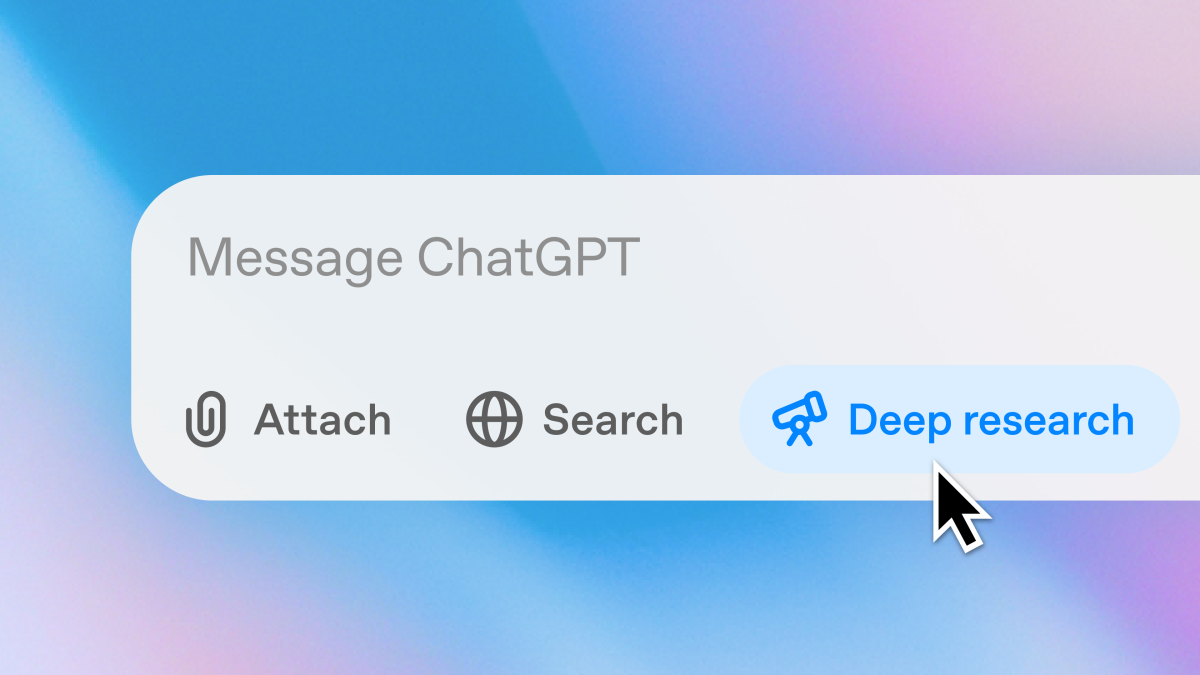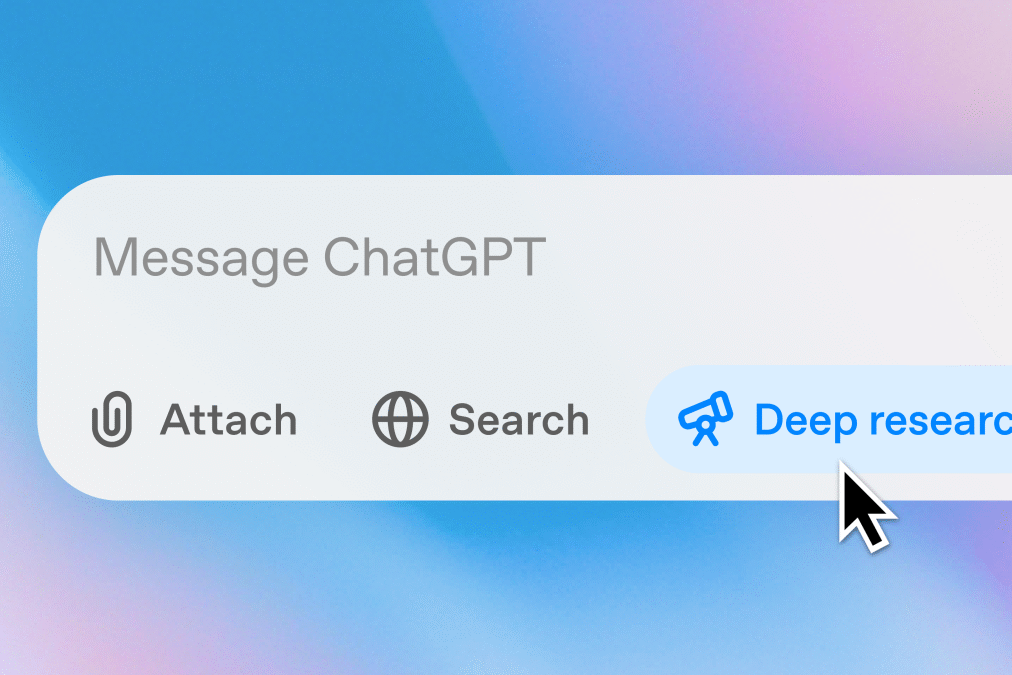Unlocking Strategic Insight with ChatGPT’s Deep Research Capability: A Guide for B2B Marketers
ChatGPT’s new Deep Research capability is a breakthrough for B2B teams that rely on speed, accuracy, and insight to drive growth. Like the similarly named product from Google, Gemini Deep Research, it goes beyond generic AI outputs, delivering real-time, source-backed, comprehensive outputs.
For organisations, this means faster market analysis, sharper competitor intel, and smarter content strategies, all powered by AI that thinks like a strategist, not just a chatbot…
What Is Deep Research in ChatGPT?

Deep Research is a specialised AI capability designed to perform in-depth, multi-step research using data from the public web. Fine-tuned on OpenAI’s powerful o3 reasoning model, it can autonomously search, interpret, and synthesise information from a wide range of online sources.
This allows it to produce thorough, documented, and clearly cited reports on complex topics, not just quick answers. Whether you’re exploring a niche market, comparing martech platforms, or analysing a competitor’s positioning, it delivers insight that’s both comprehensive and credible.
It’s a significant evolution in generative AI, giving marketing and strategy teams an intelligent partner for high-stakes, insight-driven work.
How do I Use Deep Research?
- Activate Deep Research Mode: Within ChatGPT, start a new chat and select “Research” mode within the chat interface (visible only to eligible users). This activates the Deep Research functionality.
- Ask Clear, Strategic Questions: Deep Research is best used for questions where depth, accuracy, or recency is critical. For example: “What are the top digital commerce trends for B2B manufacturers in 2025?” or “Compare the ABM features of 6sense and Demandbase with recent analyst reviews.”
- Review the Citations: Every response includes citations and clickable links to sources — think analyst reports, trusted trade publications, or original research — enabling you to validate and explore further.
- Iterate and Refine: Follow up with prompts like “Can you summarise this for a marketing leadership presentation?” or “Create a slide-ready bullet point summary of the findings.”
Use Cases of Deep Research for B2B Organisations
Here are a few examples of where Deep Research becomes a strategic advantage for B2B teams:
- Market Landscape Analysis
Before entering a new sector or region, use it to identify key players, growth forecasts, regulatory considerations, and recent M&A activity, all backed by up-to-date sources. - Competitor Intelligence
Ask targeted questions about your competitors’ product launches, pricing models, or media coverage. It can draw from press releases, product documentation, and industry commentary. - Sales Enablement Content
Equip sales teams with insight-rich material tailored to specific industries or buyer personas. Use it to gather pain points, strategic priorities, and vendor comparisons relevant to target accounts. - Thought Leadership & Content Strategy
Validate blog angles, thought leadership themes, and SEO content plans by researching current conversations, emerging topics, and audience interest across B2B sectors. - Pitch & Proposal Development
From sector stats to executive quotes and recent strategic moves, it can gather the proof points that elevate your proposals and pitches.
Final Thoughts
Deep Research doesn’t just save time — it gives you a personal PhD student who works at lightning speed. In an era where marketing leaders are expected to act as strategic partners to sales, product, and commercial teams, its capability puts high-quality insight at your fingertips.
For B2B organisations looking to scale smarter and act faster, it’s an essential addition to your team’s workflow.
Want tips to effectively prompt ChatGPT? Check out the blog: Generative AI Prompting: RACE Framework




